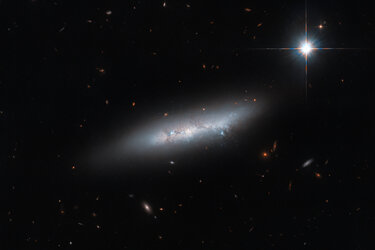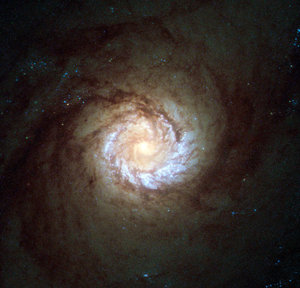Accept all cookies Accept only essential cookies See our Cookie Notice

About ESA
The European Space Agency (ESA) is Europe’s gateway to space. Its mission is to shape the development of Europe’s space capability and ensure that investment in space continues to deliver benefits to the citizens of Europe and the world.
Highlights
ESA - United space in Europe
This is ESA ESA facts Member States & Cooperating States Funding Director General Top management For Member State Delegations European vision European Space Policy ESA & EU Space Councils Responsibility & Sustainability Annual Report Calendar of meetings Corporate newsEstablishments & sites
ESA Headquarters ESA ESTEC ESA ESOC ESA ESRIN ESA EAC ESA ESAC Europe's Spaceport ESA ESEC ESA ECSAT Brussels Office Washington OfficeWorking with ESA
Business with ESA ESA Commercialisation Gateway Law at ESA Careers Cyber resilience at ESA IT at ESA Newsroom Partnerships Merchandising Licence Education Open Space Innovation Platform Integrity and Reporting Administrative Tribunal Health and SafetyMore about ESA
History ESA Historical Archives Exhibitions Publications Art & Culture ESA Merchandise Kids Diversity ESA Brand Centre ESA ChampionsLatest
Space in Member States
Find out more about space activities in our 23 Member States, and understand how ESA works together with their national agencies, institutions and organisations.
Science & Exploration
Exploring our Solar System and unlocking the secrets of the Universe
Go to topicAstronauts
Missions
Juice Euclid Webb Solar Orbiter BepiColombo Gaia ExoMars Cheops Exoplanet missions More missionsActivities
International Space Station Orion service module Gateway Concordia Caves & Pangaea BenefitsLatest
Space Safety
Protecting life and infrastructure on Earth and in orbit
Go to topicAsteroids
Asteroids and Planetary Defence Asteroid danger explained Flyeye telescope: asteroid detection Hera mission: asteroid deflection Near-Earth Object Coordination CentreSpace junk
About space debris Space debris by the numbers Space Environment Report In space refuelling, refurbishing and removingSafety from space
Clean Space ecodesign Zero Debris Technologies Space for Earth Supporting Sustainable DevelopmentLatest
Applications
Using space to benefit citizens and meet future challenges on Earth
Go to topicObserving the Earth
Observing the Earth Future EO Copernicus Meteorology Space for our climate Satellite missionsCommercialisation
ESA Commercialisation Gateway Open Space Innovation Platform Business Incubation ESA Space SolutionsLatest
Enabling & Support
Making space accessible and developing the technologies for the future
Go to topicBuilding missions
Space Engineering and Technology Test centre Laboratories Concurrent Design Facility Preparing for the future Shaping the Future Discovery and Preparation Advanced Concepts TeamSpace transportation
Space Transportation Ariane Vega Space Rider Future space transportation Boost! Europe's Spaceport Launches from Europe's Spaceport from 2012
Playing against type
Thank you for liking
You have already liked this page, you can only like it once!
Most galaxies we are familiar with fall into one of two easily-identified types. Spiral galaxies are young and energetic, filled with the gas needed to form new stars and sporting spiral arms hosting hot, bright stars. Elliptical galaxies have a much more pedestrian look, their light coming from a uniform population of older and redder stars. But other galaxies require in-depth study to understand: such is the case with NGC 4694, a galaxy located 54 million light-years from Earth in the Virgo galaxy cluster, and the subject of this Hubble Picture of the Week.
NGC 4694 has a smooth-looking, armless disc which — like an elliptical galaxy — is nearly devoid of star formation. However its stellar population is still relatively young and new stars are still actively forming in its core, powering the brightness we can see in this image and giving it a markedly different stellar profile from that of a classic elliptical galaxy. The galaxy is also suffused by the kinds of gas and dust normally seen in a young and sprightly spiral; elliptical galaxies often do host significant quantities of dust, but not the gas needed to form new stars. NGC 4694 is surrounded by a huge cloud of invisible hydrogen gas, fuel for star formation. This stellar activity is the reason for Hubble’s observations here.
As this Hubble image shows, the dust in this galaxy forms chaotic structures that indicate some kind of disturbance. It turns out that the cloud of hydrogen gas around NGC 4694 forms a long bridge to a nearby, faint dwarf galaxy named VCC 2062. The two galaxies have undergone a violent collision, and the larger NGC 4694 is accreting gas from the smaller galaxy. Based on its peculiar shape and its star-forming activity, NGC 4694 has been classified as a lenticular galaxy: lacking the unmistakable arms of a spiral, but not so bereft of gas as an elliptical galaxy, and still with a galactic bulge and disc. Some galaxies just aren’t so easy to classify as one type or the other!
[Image Description: An oval-shaped galaxy seen tilted at an angle. It glows brightly at its central point, with the radiated light dimming out to the edge of the oval. Reddish-brown, patchy dust spreads out from the core and covers much of the galaxy’s top half, as well as the outer edge, obscuring some of its light. Stars can be seen around and in front of the galaxy.]
-
CREDIT
ESA/Hubble & NASA, D. Thilker -
LICENCE
CC BY 4.0 INT or ESA Standard Licence
(content can be used under either licence)

Galaxies in miniature

“Late-type” galaxy?

A hungry starburst galaxy

Rings and things















 Germany
Germany
 Austria
Austria
 Belgium
Belgium
 Denmark
Denmark
 Spain
Spain
 Estonia
Estonia
 Finland
Finland
 France
France
 Greece
Greece
 Hungary
Hungary
 Ireland
Ireland
 Italy
Italy
 Luxembourg
Luxembourg
 Norway
Norway
 The Netherlands
The Netherlands
 Poland
Poland
 Portugal
Portugal
 Czechia
Czechia
 Romania
Romania
 United Kingdom
United Kingdom
 Slovenia
Slovenia
 Sweden
Sweden
 Switzerland
Switzerland
























